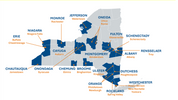Several weeks ago I wrote about the impact of outstanding PPP loans on pending M&A deals. Since that time we have received additional guidance and clarity regarding the impact on deal terms and the forgivability of PPP loans. Most recently we received an additional interim final rule from the SBA which clarifies the mechanics of forgivability in the context of pending M&A deals.
At the outset, parties to a pending M&A transaction with an overlapping PPP loan essentially have three options: 1) delay the transaction and wait for the application for forgivability to be processed; 2) apply for the forgiveness before closing and before the expiration of the covered period; or 3) close the transaction and subsequently apply for forgivability.
Delay the transaction. Determination on PPP forgiveness applications can take up to 60 days following submission of the application to a lender. This means that any hopes of obtaining forgiveness prior to closing could potentially result in a delay of a closing up to 60 days. Lenders may of course process a forgiveness application sooner than 60 days so it may be worth a discussion with your particular lender. While not ideal from a timing perspective, this option is the safest way to ensure that you maximize forgiveness of PPP loans and minimize the impact of the deal on that forgiveness.
Forgiveness before expiration of covered period. Guidance released earlier this week from the SBA clarified that borrowers are now permitted to apply for forgiveness before the end of their covered period (now 8 weeks or 24 weeks). Prior to this guidance it was understood that a borrower would have to wait until the end of their respective covered period to apply. There is however some risk to this. If a borrower applies for loan forgiveness before the end of the covered period and has reduced any employees’ salaries or wages by more than the 25% allowed for full forgiveness, the borrower must account for the excess salary reduction for the entirety of the covered period.
In essence, PPP borrowers that apply early for loan forgiveness forfeit a safe-harbor provision allowing them to restore salaries or wages by December 31 and avoid reductions in the loan forgiveness they receive. The example provided in the interim final rule shows how the calculations would work:
Example: A borrower is using a 24-week covered period. This borrower reduced a full-time employee’s weekly salary from $1,000 per week during the reference period to $700 per week during the covered period. The employee continued to work on a full-time basis during the covered period, with an FTE of 1.0. In this case, the first $250 (25% of $1,000) is exempted from the loan forgiveness reduction. The borrower seeking forgiveness would list $1,200 as the salary/hourly wage reduction for that employee (the extra $50 weekly reduction multiplied by 24 weeks). If the borrower applies for forgiveness before the end of the covered period, it must account for the salary reduction for the full 24-week covered period (totaling $1,200).
While relying on this new guidance runs the risk of reducing the amount that is ultimately forgivable if the employment requirements aren't met, it does allow for forgiveness applications to be submitted before the end of a covered period if necessary in order to close a transaction within a certain time frame.
Post-closing forgiveness. The final option is applying for forgiveness after a closing. Unfortunately here, there is no guidance on whether a borrower can continue to participate in forgiveness after consummating an M&A transaction. One particular concern here arises if a surviving entity post-closing ends up having two PPP loans—with specific guidance (at least right now) stating that a borrower may only have one PPP loan. Under this situation, only one PPP loan may end up being eligible for forgiveness (assuming forgiveness is permitted at all).
Of course, any change in control transaction must obtain the consent of a PPP lender. When the SBA announced initial guidelines for the Paycheck Protection Program, lenders were advised that they could utilize their own form promissory note or wait for the official SBA form. Most lenders opted to wait for the SBA form promissory note. A provision of this form promissory note is an event of default for a change of control if the borrower “[r]eorganizes, merges, consolidates, or otherwise changes ownership or business structure without Lender's prior written consent.” Given the possibility that an individual lender may not have used the SBA form promissory note, it is recommended that the actual executed promissory notes be reviewed not only for events of default, but for other possible restrictive covenants.
It has been our experience that banks are generally willing to issue a written consent though you may need to provide them with a form as many do not have these on hand. This is an easy enough hoop to jump through but may cause a delay of a few days given internal compliance measures at a particular bank.
Care should be taken to obtaining the consent as not doing so runs the risk of the borrower being in default of the PPP loan which, in addition to typical remedies a lender may resort to, also puts the entirety of forgiveness of the loan at risk. Without consent of the lender, it would be prudent to plan for repaying the entirety of a PPP loan at closing.
PPP recipients can apply early for loan forgiveness, SBA says
 unknownx500
unknownx500


/Passle/5dc1896e8cb6240888194e3d/SearchServiceImages/2024-07-17-23-19-08-045-6698516c0752df56d2453486.jpg)







